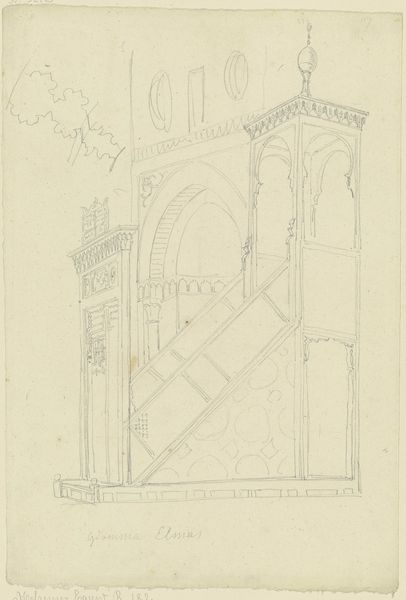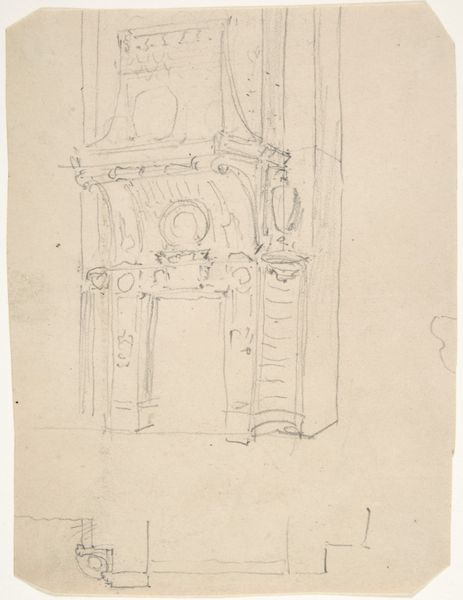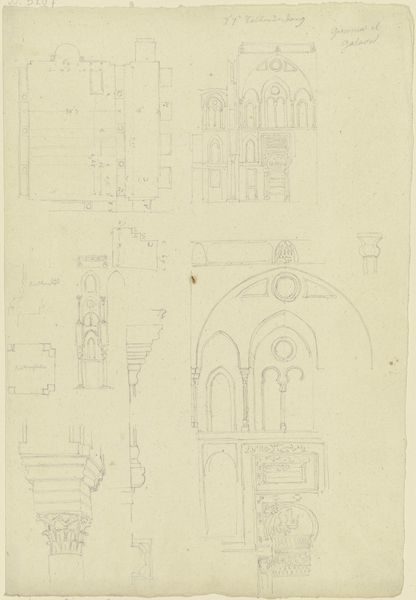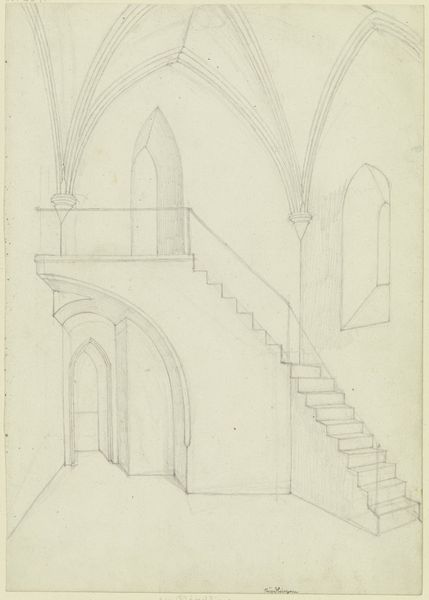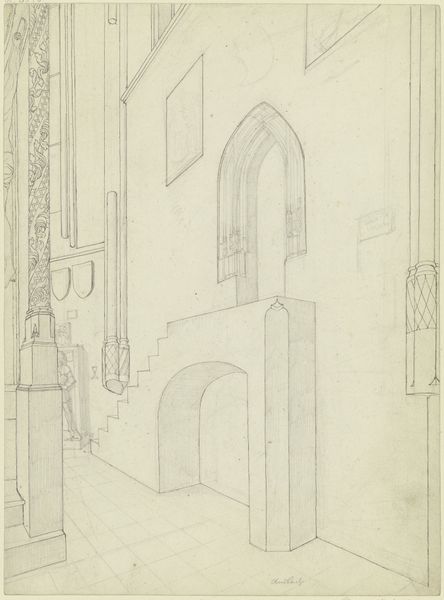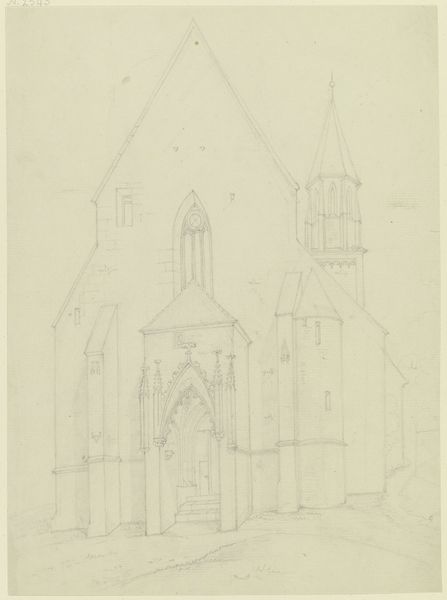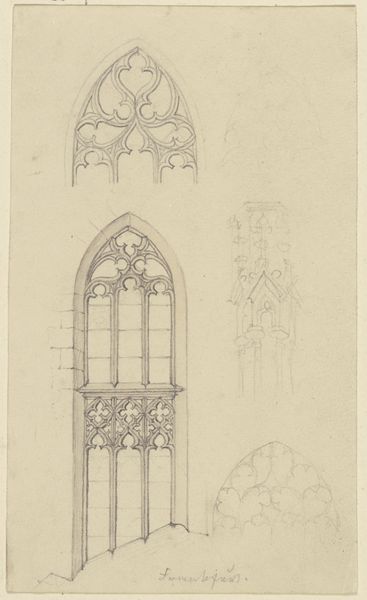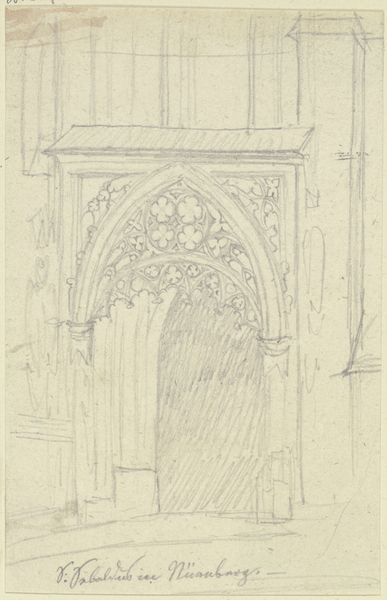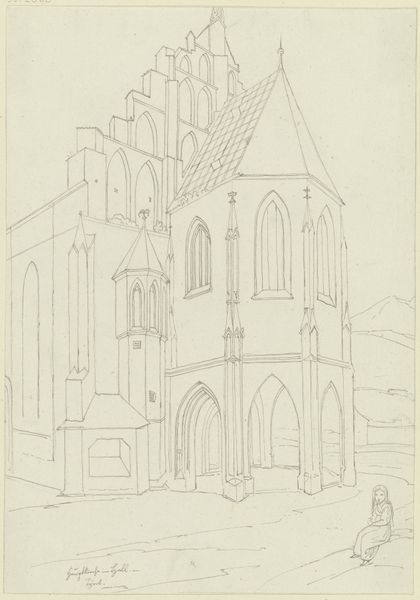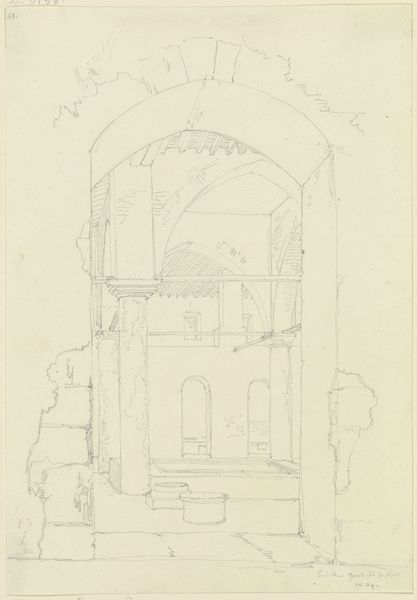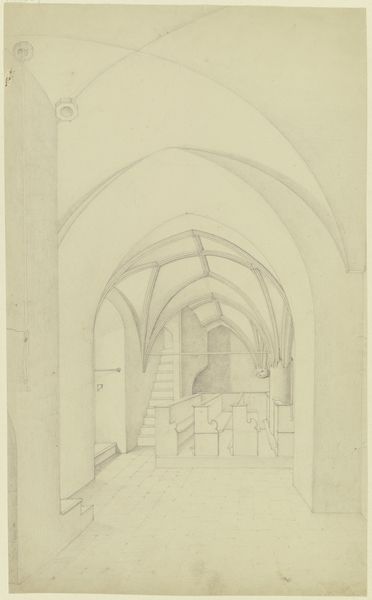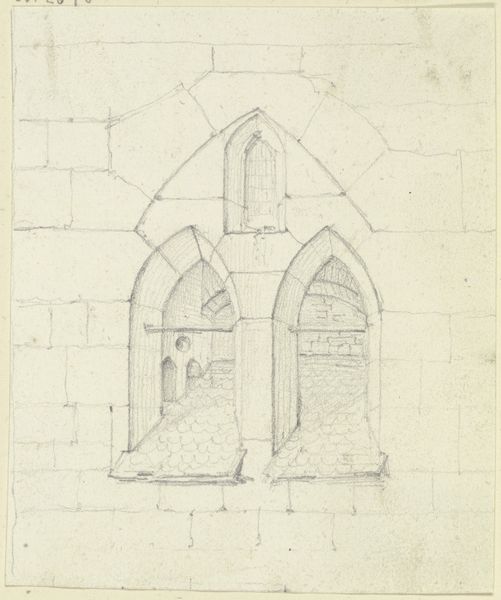
drawing, pencil, architecture
#
drawing
#
neoclassicism
#
pencil
#
architecture
Copyright: Public Domain
Curator: Allow me to introduce Friedrich Maximilian Hessemer's 1829 pencil drawing, “Wall outline,” currently held in the Städel Museum. Editor: It strikes me as ethereal, almost ghostly. The precision of the architectural renderings is softened by the medium. The bare paper is a canvas ready for stories untold. Curator: Yes, the delicate lines convey a powerful sense of space. Notice how Hessemer utilizes light and shadow to define the architectural forms? The meticulous arrangement of lines creates a hierarchy of spaces within the frame. It adheres very strongly to the prevailing neoclassicism. Editor: Absolutely. But there is something more than mere aesthetics at play. This wasn’t simply a study, it reflects Hessemer’s historical role as the Inspector of Buildings, documenting the construction in Frankfurt and striving to connect civic building design to past architectural eras. How can Hessemer engage with this design heritage responsibly while serving Frankfurt's aspirations? Curator: You make an important point about the social dimension. Consider how the artist has strategically presented his architecture to provoke thoughtful examination, but more directly I want to return to the pencil-stroke details. Doesn't the density and rhythm of these lines, along with the light values, offer profound access to his thinking on the form? It creates, in effect, the work’s meaning. Editor: Agreed. But to separate the image from its social context, its historical situation is misguided. Who will these walls enclose? What societal function will they fulfil? It seems vital to contextualize. How does the role of buildings, in general, affect what kind of work we see produced during the construction itself? Curator: Of course, you're speaking of historical significance. My inclination is merely to appreciate Hessemer's craft in its material form. He communicates architectural ideas not just to the observer of buildings but also to their users. Editor: That's interesting, indeed. Perhaps the synthesis of design and meaning shapes how people ultimately perceive architecture over time. Curator: And how lines make up this space remains striking to consider when experiencing art of this neoclassic time. Editor: Yes, to explore not only an architectural design through light but through the historical framework to offer meaning in this medium of art itself.
Comments
No comments
Be the first to comment and join the conversation on the ultimate creative platform.
